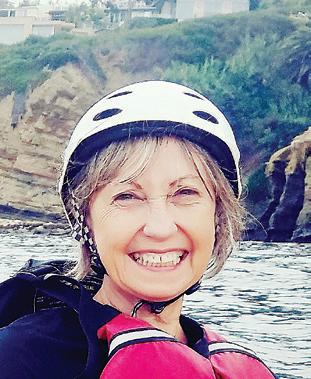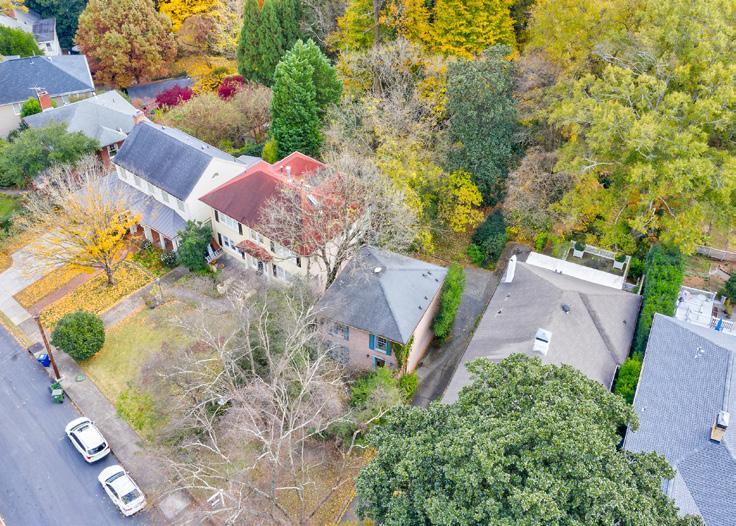
3 minute read
ABOVE THE WATER LINE
Erik Fyfe and several friends began their journey to the headwaters of the Chattahoochee River, walking the mountain ridges and slopes of north Georgia’s Mark Trail Wilderness, with mist and low-lying clouds enveloping them. He thought the weather conditions were particularly appropriate; where does a river start, but in the clouds?
For the past three years, Erik has worked for Chattahoochee Riverkeeper (CRK), the nonprofit environmental organization that I helped found in 1994 and retired from in 2014; this year, our group is celebrating 25 years of keeping watch over the river, its lakes and tributaries – a watershed of nearly 9,000 square miles. To honor the hardest-working waterway in Georgia, which provides so much for so many, CRK has organized Relay Down the Hooch: a 435-mile, Olympic torch-style relay, first on foot and then by boat, to take place from March to November.
The Chattahoochee River watershed touches three states, countless communities, and more than five million people who depend on it for drinking water, farming and power generation; it also provides crucial wildlife habitat and is a valuable resource for recreation: hiking, tubing, paddling, fishing, sailing and power-boating.
More than 25 partner organizations, outfitters, advocates and others are engaged in Relay Down the Hooch. Everyone else is welcome to follow along, as the participants “pass the paddle” from community to community. The general public is also invited to join the paddlers and boaters for select relay sections. On April 27, the public can participate in a 13-mile paddle from Mossy Creek State Park to Lula, a flat river section above Lake Lanier. On June 29, I’d love to have you join me and Chattahoochee Parks Conservancy (the friends group for the Chattahoochee River National Recreation Area) to paddle a metro Atlanta relay section from Morgan Falls Dam to the Paces Mill boat ramp. Details, registration and an interactive map can be found at www.chattahooochee.org/relay.
For the past quarter of a century, Chattahoochee Riverkeeper has worked to ensure enough clean water in the Chattahoochee River and its tributaries for people and wildlife. An amazing sum of $28 million was donated to CRK during these years to support monitoring, educational, policy, legal and recreational programs. That critical support has yielded measurable results in cleaner drinking water supplies, enhanced wildlife habitat, safer recreational areas, improved property values and more. In fact, every dollar donated resulted in at least $80 in documented benefits: a total investment of more than $2 billion from and for the people who live, work and play in the Chattahoochee watershed.
By Sally Bethea
Sally Bethea is the retired executive director of Chattahoochee Riverkeeper and current board president of Chattahoochee Parks Conservancy whose mission is to build a community of support for the Chattahoochee River National Recreation Area.

The first leg of the relay began with the two and a half mile hike to the spring that gives birth to the Chattahoochee River, followed by a challenging plunge down the mountain (along the river) to Horse Trough Falls and the Upper Chattahoochee River Campground, wrapping up just upstream of the town of Helen: a 14mile adventure that took Erik and his team a full day. There is no trail in the mile and a half section between the spring and the campground; the area is thick with rhododendron and requires good maps and a dozen river crossings, so it is not recommended for most hikers. As they spent hours scrambling down the slope, the team marveled at the huge trees, fields of trout lilies and pristine river water.
At the campground, where human impacts became visible for the first time (trash and silty water), the hikers began to follow Forest Service roads that wound beside, across and above the Chattahoochee, as it gained additional volume from fast-flowing tributary streams. They carried with them an official “torch” (actually a three-foot, custom paddle serving as a commemorative baton), which they passed to a team of tubers in Helen, who subsequently floated to Nacoochee Bend.
With plenty of water in the river for paddling downstream, the relay sections to Hardman Farm, followed by Sautee Creek, Buck Shoals and Mossy Creek will have been completed by early April, when you are reading this column. When they arrive at Mossy Creek, the relay teams will have covered about 42-miles from the headwaters spring. Ultimately, more than 30 sections will be completed on the 435-mile watery journey, before reaching the end of the river at Jim Woodruff Dam, where the Chattahoochee joins the Flint River and becomes the Apalachicola River; the mingled waters flow another one hundred miles through Florida before emptying into the Gulf of Mexico.
Riverkeeper Jason Ulseth calls the relay a “year-long river patrol,” noting, “We’ve made tremendous progress in water quality improvements and this is an opportunity to celebrate the river’s revival.”
This Earth Month, I hope that you’ll find time to thank, donate to and/or volunteer with one or more of the dozens of environmental organizations in Georgia that work tirelessly to ensure that you and your family have clean air and water, parks and green space and safe communities.




























